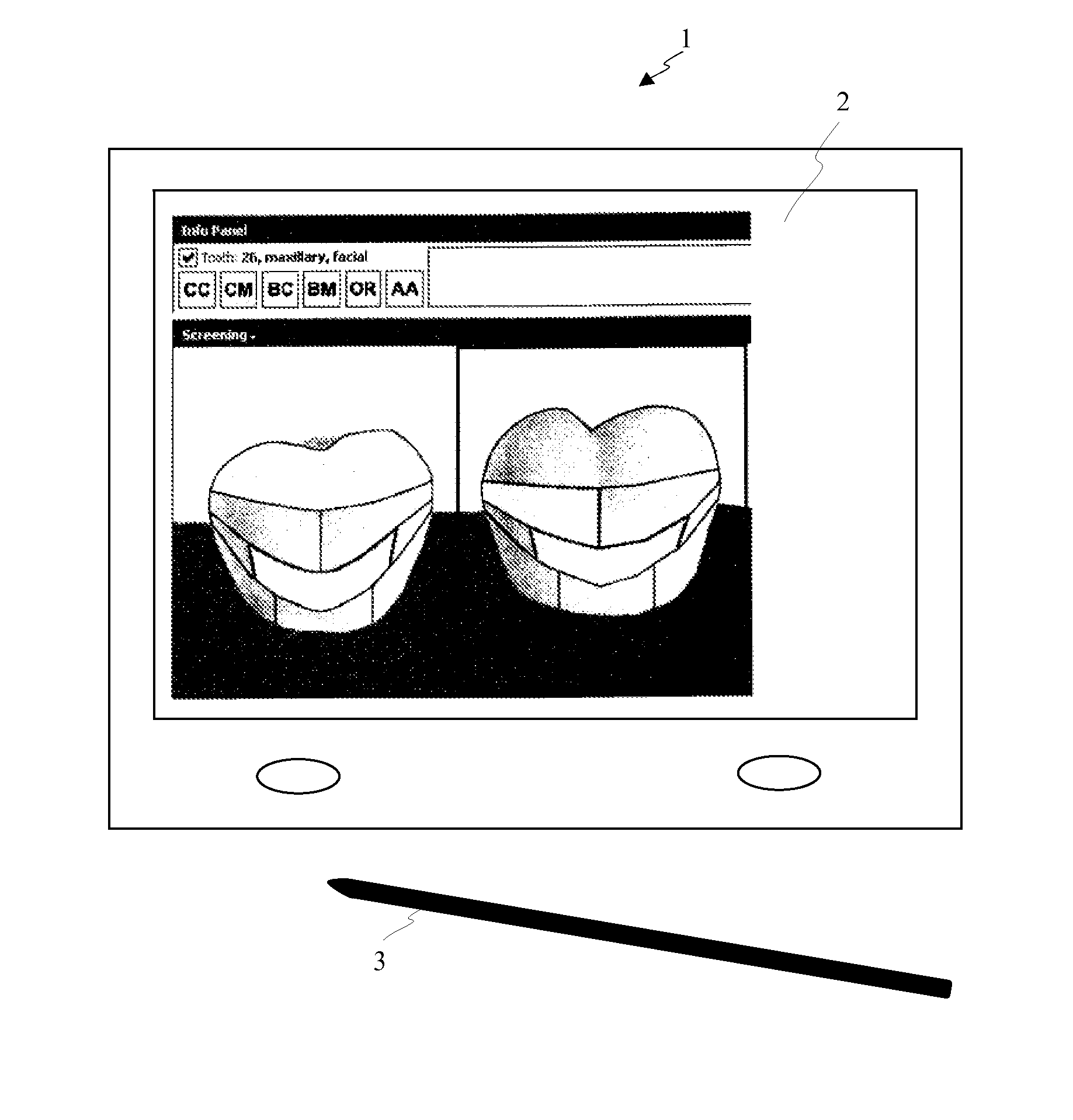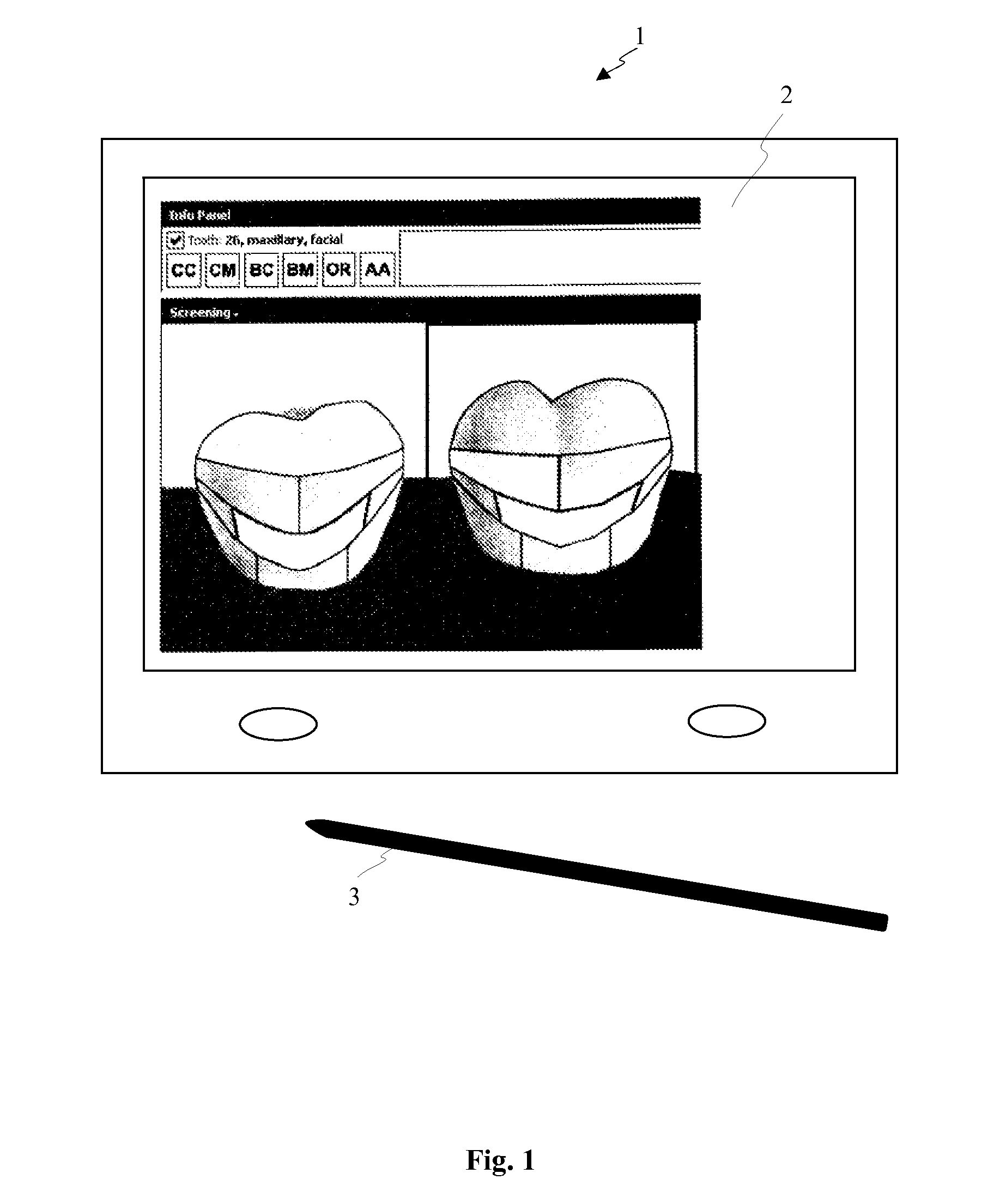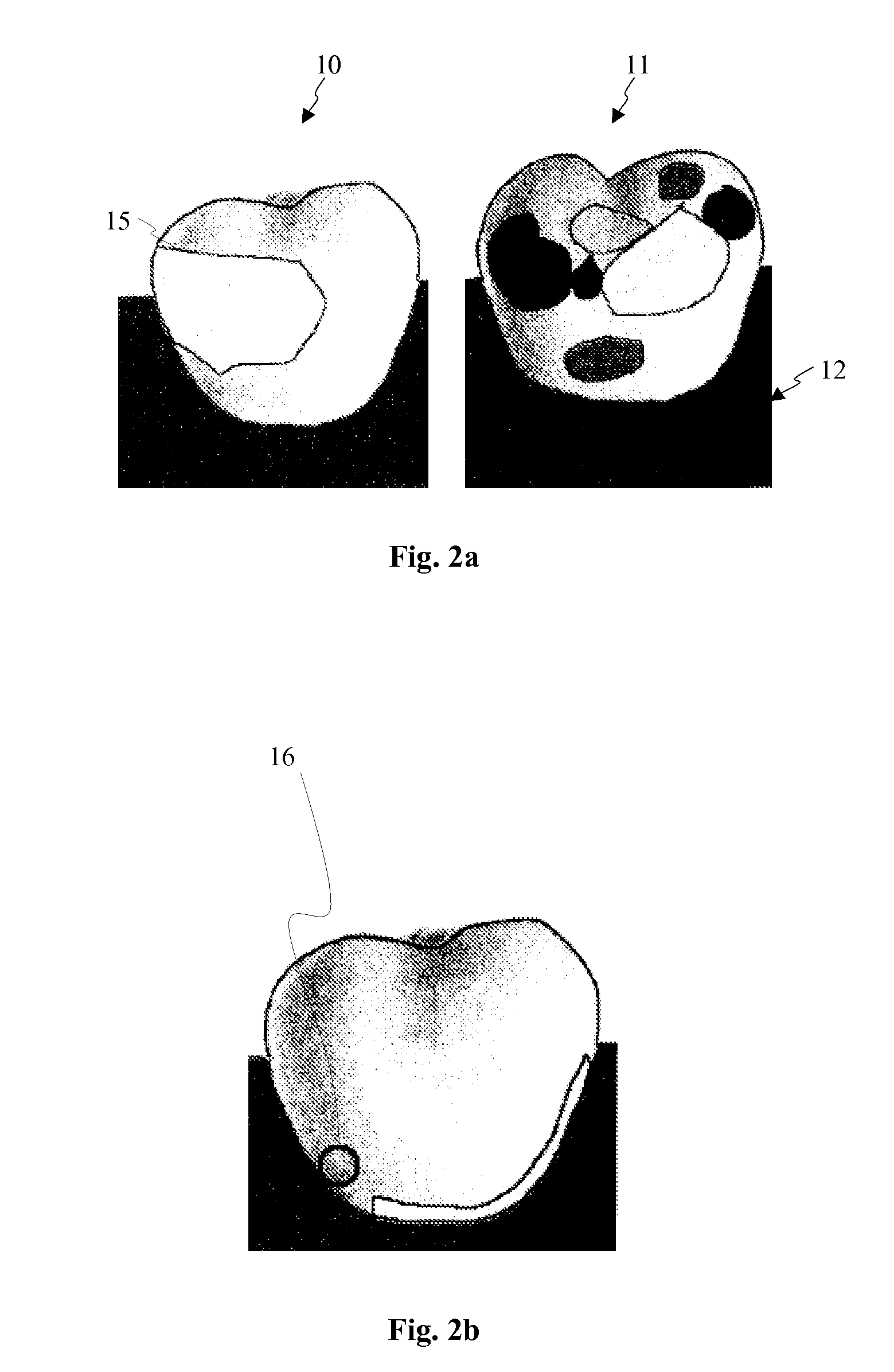Method and device for measuring the efficacy of plaque removal
a technology of plaque removal and measuring device, which is applied in the field of toothbrushes, can solve problems such as insufficient quality, and achieve the effect of moving more accurately
- Summary
- Abstract
- Description
- Claims
- Application Information
AI Technical Summary
Benefits of technology
Problems solved by technology
Method used
Image
Examples
Embodiment Construction
[0018]FIG. 1 shows a schematic diagram of a display and input device 1 for measuring the efficacy of plaque removal on the teeth of a volunteer. The display and input device 1 may be a portable display device with a touch-sensitive display device 2, e.g., a touchscreen. For operation of the display device 2, an input stylus 3 may be provided, because data input can be performed more accurately by using a stylus in comparison with a mouse.
[0019]The display and input device 1 may have a memory device for storing teeth, i.e., dental models of various teeth. A facial view and a lingual view may be saved for each of the individual teeth. In addition, different plaque index systems can be saved for performing measurements of the efficacy of plaque removal.
[0020]Determination of the efficacy of plaque removal by dental care products is a central component of the development and manufacturing process. To evaluate the efficacy of plaque removal, the dental care products that have been develo...
PUM
 Login to View More
Login to View More Abstract
Description
Claims
Application Information
 Login to View More
Login to View More - R&D
- Intellectual Property
- Life Sciences
- Materials
- Tech Scout
- Unparalleled Data Quality
- Higher Quality Content
- 60% Fewer Hallucinations
Browse by: Latest US Patents, China's latest patents, Technical Efficacy Thesaurus, Application Domain, Technology Topic, Popular Technical Reports.
© 2025 PatSnap. All rights reserved.Legal|Privacy policy|Modern Slavery Act Transparency Statement|Sitemap|About US| Contact US: help@patsnap.com



